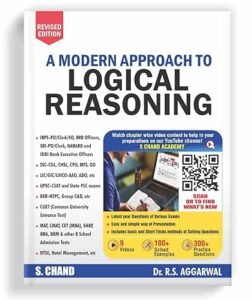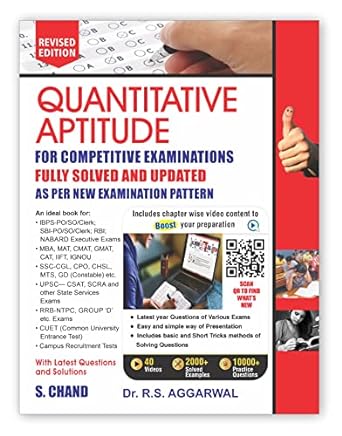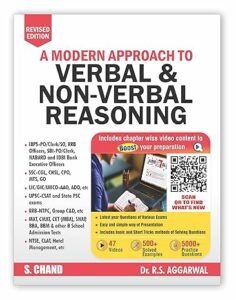MBA CET STUDY MATERIAL

MBA CET Logical Reasoning Notes
The Logical Reasoning section comprises of 75 marks in MAH-MBA CET. It is one of trickiest sections to score that maximum weightage to puzzles. Topics other than puzzles are scoring in nature. The following table consists of important topics from Logical Reasoning section and their approximate weightage.
| Topics | Marks |
| Circular Arrangement | 5 marks |
| Linear Arrangement | 5 marks |
| Matrix Arrangement | 5 marks |
| Miscellaneous Arrangement | 5 marks |
| Critical Reasoning | 5 marks |
| Coding-Decoding | 5 marks |
| Alphanumeric Sequence | 5 marks |
| Syllogism | 5 marks |
| Input-Output | 5 marks |
| Direction Sense | 5 marks |
| Blood Relations | 5 marks |
| Inequalities/Symbols & Notations | 5 marks |
| Total | 60/75 marks |
MBA CET Quant/DI Notes
The Quant/DI section comprises of 50 marks and this is the only section where students can aim on scoring 50 marks. The Data Interpretation part is not as tough as CAT. The Arithmetic part can be time consuming some times. The following table consists of all the important topics from Quant/DI section along with their weightage.
| Topics | Marks |
| Caselet/Line chart | 5 marks |
| Bar graph/Numeric table | 10 marks |
| Pie chart/Mixed chart | 10 marks |
| Quantitative Comparison/Data Sufficiency | 5 marks |
| Time & Work | 1-2 marks |
| Time Speed Distance | 1-2 marks |
| Profit loss/Ratio Proportions | 1-2 marks each |
| LCM HCF | 1-2 marks |
| Probability | 1-2 marks |
| Simple & Compound Interest | 2-3 marks |
| Averages Mixtures Allegations | 2 marks |
| Number Series | 5 marks |
| Total | 48/50 marks |
MBA CET VARC Notes
The VARC or Verbal Ability and Reading Comprehension session is the ultimate game changer. It comprises of 50 marks where RC part is asked for 15-20 marks. The Verbal Ability topics are easy but options are closely spaced. The following table consists of important topics from, VARC section along with weightage:
| Topics | Marks |
| RC Passages | 15 marks |
| Cloze Test | 5 marks |
| Sentence Correction | 2-5 marks |
| Parajumble | 5 marks |
| Synonym Antonym | 2 marks |
| Idioms Phrases | 2 marks |
| Word Substitution | 3 marks |
| Total | 35/50 marks |
MBA CET Visual Reasoning Notes
Visual Reasoning or Abstract Reasoning in CET is a scoring section provided that you have practiced enough pattern. The following table consists of important topics from Visual Reasoning section along with their weightage:
| Topic | Marks |
| Series | 10 marks |
| Odd man out | 5 marks |
| Missing figure | 5 marks |
| Miscellaneous | 5 marks |
| Total | 25/25 marks |
Extra Practice PDF
| Topics |
| Quant Handwritten Notes |
| DILR Handwritten Notes |
| Quant Shortcuts |
| Quant Question Bank |
| Quant Tricks |
| 350+ Parajumbles |
| 99 RC with Solutions |
- How to Write a One-Page Internship Resume That Stands Out in 2025?
- 10 Common Internship Application Mistakes and How to Avoid Them in 2024
- Resume for Internship with No Experience: Step-by-Step Guide 2025
- Best Cover Letter Samples for Internship Applications
- The Ultimate Guide to Crafting the Perfect Resume Template for Internship
Free Apps to prepare for MBA CET
- Logical Reasoning Test: Practice, Tips & Tricks
- Aptitude Test and Preparation, Tricks & Practice
- Aptitude and Logical Reasoning preparation
Books for MBA CET 2025 Preparation
|
A Modern Approach to Logical Reasoning  |
Must Explore
MBA CET 2025 SYLLABUS
Quantitative Aptitude (50 Questions)
- Numbers
- Probability
- Percentage
- Data Sufficiency
- Algebra
- Data Interpretation – Graphs, Charts, Tables
- Arithmetic
- Geometry
- Quantitative Reasoning
- Mensuration
- Ratio Proportion
Logical Reasoning (75 Questions)
- Syllogisms
- Direction
- Blood Relations
- Coding/Decoding
- Input/Output
- Venn Diagram
- Conditional Coding
- Selection Criteria
- Tracing Sequential Output
- Linear and Circular Arrangement
- Symbol-based Comparison
- Matrix Arrangement
Verbal Ability / Reading Comprehension (50 Questions)
- Comprehension of passages
- Vocabulary
- Grammar
- Fill in the blanks
- Antonyms
- Synonyms
- Para Jumbles
- Verbal Reasoning
- Phrase replacement
- Para Jumbles
- Sentence arrangement, completion, correction
- Spelling/Inappropriate usage
- Odd Sentence Para Jumble
MBA CET Logical Reasoning 2025: The Ultimate Guide to Master the Section and Score High
Introduction
The MBA CET Logical Reasoning section can feel like a tricky maze, but with the right preparation, it’s possible to not just navigate through it but ace it! Whether you’re a first-time aspirant or someone giving it another go, Logical Reasoning plays a critical role in your overall score in MBA CET 2025.
Logical reasoning is a skill that tests your critical thinking, analytical abilities, and how efficiently you can process information under pressure. This guide will walk you through every aspect of the Logical Reasoning section in the MBA CET exam—from understanding key topics to adopting strategic approaches, avoiding common mistakes, and using expert tips to your advantage. Plus, we’ve included sample questions, so you’ll have plenty of material to practice with. Ready to dive in? Let’s begin!
Table of Contents:
- What is MBA CET Logical Reasoning?
- Why MBA CET Logical Reasoning Matters
- Key Topics in MBA CET Logical Reasoning
- Detailed Breakdown of Each Topic
- Best Strategies to Ace MBA CET Logical Reasoning
- Common Mistakes to Avoid
- Practice Questions with Solutions
- Recommended Resources for MBA CET Logical Reasoning
- How to Build Speed and Accuracy
- Conclusion: Your Next Steps to Ace MBA CET Logical Reasoning
- FAQ on MBA CET Logical Reasoning
What is MBA CET Logical Reasoning?
The Logical Reasoning section in the MBA CET exam is designed to assess your problem-solving skills. It focuses on testing how well you can interpret data, identify patterns, analyze statements, and draw logical conclusions. This section includes questions on analytical puzzles, series, relationships, arrangements, coding-decoding, and visual reasoning.
This part of the exam is more than just solving puzzles—it’s about testing your ability to think on your feet and solve problems quickly. The reasoning section is often challenging due to time constraints, but it can be a high-scoring section if approached correctly.
Importance of Logical Reasoning in MBA CET
Logical Reasoning makes up a significant portion of the MBA CET exam, with about 75 to 100 questions out of the total 200. This shows how much weight this section holds in your overall score. Moreover, this section doesn’t require any prior theoretical knowledge, unlike Quantitative Aptitude or Verbal Ability, so a good practice strategy can significantly boost your performance.
Key Topics in MBA CET Logical Reasoning
Before jumping into preparation, let’s get a clear picture of the Logical Reasoning syllabus for the MBA CET 2025:
-
Seating Arrangement: Includes linear and circular seating arrangements, where you are required to arrange individuals based on given conditions.
-
Blood Relations: Tests your understanding of family relationships through different generations.
-
Direction Sense Test: Involves questions where you determine directions based on movements described in the question.
-
Puzzles: Requires solving logical puzzles, involving numbers, people, or objects.
-
Syllogism: Tests your ability to conclude based on logical statements.
-
Coding-Decoding: Involves decoding a coded message and finding a pattern or rule.
-
Series Completion: Requires finding missing numbers or terms in a given series.
-
Input-Output: Complex reasoning problems where a specific process is applied to inputs to derive outputs.
-
Data Sufficiency: Involves determining if the provided data is enough to solve a problem.
-
Analytical Reasoning: Tests your problem-solving capabilities through various types of logical puzzles.
-
Visual Reasoning: Questions based on figures and patterns where you identify anomalies or missing elements.
Detailed Breakdown of Each Topic
1. Seating Arrangement
Seating Arrangement questions can come in two types—linear arrangements and circular arrangements. You are given a set of people and clues about how they are seated or arranged. The objective is to deduce the exact seating order.
-
Linear Arrangement: People are arranged in a straight line. Some may face north, while others face south, adding complexity.
-
Circular Arrangement: People are seated in a circle, and their facing directions (inward or outward) matter a lot in solving the puzzle.
Key Tip: Draw diagrams as you read the problem. These help visualize arrangements and reduce errors.
2. Blood Relations
Blood Relations questions are based on family hierarchies. You’ll be given statements that describe relationships among people, and you’ll have to figure out who is related to whom. The trick lies in understanding terms like father’s sister, brother’s son, and so on.
Common Example: “Pointing to a woman in the picture, Rahul says, ‘Her brother’s father is the only son of my grandfather.’ How is the woman related to Rahul?”
Key Tip: Make family trees or flowcharts to avoid confusion.
3. Direction Sense Test
These problems involve someone moving in different directions, and you have to determine their final position or direction. For instance, a question may state that a person moves 10 km north, then 5 km east, and asks for the shortest distance to their starting point.
Key Tip: Visualize directions as you go along. Keeping a mental compass helps!
4. Puzzles
Puzzles are a broad category that can include various types of logical problems like distribution puzzles, matrix puzzles, and logical deductions. They often come in paragraph form, where you need to match elements based on the given information.
Key Tip: Break the information into smaller chunks and systematically eliminate wrong possibilities.
5. Syllogism
These are questions where you’re given a set of premises, and you need to deduce whether conclusions follow logically from them. It’s important to follow the logical flow without introducing assumptions.
Example:
- Premise 1: All men are mortal.
- Premise 2: Socrates is a man.
- Conclusion: Socrates is mortal.
Key Tip: Use Venn diagrams to visually map the logic.
6. Coding-Decoding
In these questions, letters or numbers are represented in a coded format, and your task is to figure out the underlying logic or pattern.
Example: If A=1, B=2, C=3, and so on, what is the code for “CAT”?
Key Tip: Write out the entire alphabet and compare positions. Sometimes codes are based on shifting positions or mirroring.
7. Series Completion
Series completion problems involve identifying the next number, letter, or figure in a sequence. The trick is to recognize the pattern quickly.
Example: 2, 6, 12, 20, 30, ?
Solution: The pattern here is that the differences between consecutive numbers increase by 2 (4, 6, 8, 10…). So, the next number is 42.
Key Tip: Practice a variety of series to become familiar with different patterns.
8. Input-Output
These are complex puzzles where inputs are processed through a specific set of rules, and you need to deduce the rules and predict the output.
Example: If an input “WATER” becomes “QYVDQ”, what will the input “EARTH” become?
Key Tip: Focus on changes between inputs and outputs, particularly how letters or numbers shift.
9. Data Sufficiency
You’ll be given a problem with two or more pieces of data. The goal is to decide whether the given data is sufficient to answer the question.
Key Tip: Don’t rush! Evaluate each piece of data separately before combining them.
10. Analytical Reasoning
Analytical reasoning questions are based on problem-solving and pattern recognition. You need to think critically and logically to solve these.
Key Tip: Break down the problem into smaller steps and don’t jump to conclusions.
11. Visual Reasoning
In visual reasoning, you’ll be working with diagrams and images. Questions often involve pattern recognition, mirror images, or odd one out problems.
Key Tip: Keep practicing these, as it’s a type of question that requires familiarity with shapes and patterns.
Best Strategies to Ace MBA CET Logical Reasoning
Knowing the topics is just the first step. The real challenge is mastering them under time pressure. Here are some tried-and-tested strategies:
-
Practice Daily: Logical reasoning is a skill, and like any skill, it gets better with practice. Set aside at least one hour a day just for Logical Reasoning.
-
Time Yourself: Practice with a timer to build speed. During the actual exam, time management will be crucial since you’ll have limited time for each question.
-
Use Shortcuts and Tricks: Certain types of questions, such as syllogisms or series, have shortcuts or formulas that can save time.
-
Mock Tests: Take mock tests regularly to simulate the exam environment. This helps reduce anxiety and improve your performance on D-day.
Common Mistakes to Avoid in Logical Reasoning
-
Overthinking Questions: Don’t get stuck on one question for too long. If it’s too complicated, move on and return later.
-
Neglecting Visual Reasoning: Many students focus heavily on verbal reasoning and neglect visual reasoning, leading to poor scores in that section.
-
Not Practicing Enough: Logical reasoning requires consistent practice. Don’t assume you’ll understand the logic in the exam without prior practice.
Practice Questions with Solutions
Question 1: Circular Arrangement
Seven people, A, B, C, D, E, F, and G, are sitting in a circle. C is between A and D. B is to the immediate left of F. G is sitting to the immediate left of A. Who is sitting between B and D?
Answer: E
Question 2: Blood Relations
Pointing to a photograph, Raj said, “Her brother’s father is the only son of my grandfather.” How is the girl in the photograph related to Raj?
Answer: Sister
Recommended Resources for MBA CET Logical Reasoning
Here are some top-rated books and resources for improving your logical reasoning skills for MBA CET:
- A Modern Approach to Logical Reasoning by R.S. Aggarwal
- How to Prepare for Logical Reasoning for CAT by Arun Sharma
- MBA CET Mock Test Series by Oliveboard
How to Build Speed and Accuracy in Logical Reasoning
Speed and accuracy can make or break your performance in MBA CET Logical Reasoning. Here’s how to improve both:
-
Timed Practice: Work on setting a timer for individual questions and sections to get used to the pressure.
-
Analyze Mistakes: Go over every mistake in your practice tests to understand where you went wrong.
-
Work on Weak Areas: If you find that you’re consistently struggling with one type of question, devote extra practice time to mastering it.
Conclusion: Your Next Steps to Ace MBA CET Logical Reasoning
As you prepare for the MBA CET 2025, remember that Logical Reasoning is one of the most high-scoring sections in the exam. With consistent practice, the right strategy, and a focus on speed and accuracy, you can significantly improve your score.
Start by going over the topics mentioned in this guide, practice every day, and take regular mock tests to track your progress. With dedication, you’ll be well on your way to mastering Logical Reasoning and securing a top rank in MBA CET 2025. Happy studying, and best of luck!
FAQ on MBA CET Logical Reasoning
-
How many questions are there in the Logical Reasoning section of MBA CET? There are typically 75 to 100 questions.
-
Is Logical Reasoning tough in MBA CET? It depends on your preparation. With the right strategy and enough practice, it can become one of the easiest sections.
-
How can I improve my speed in Logical Reasoning? Focus on practicing daily, using shortcuts where possible, and working under timed conditions.
-
Which is the best book for MBA CET Logical Reasoning? R.S. Aggarwal’s “A Modern Approach to Logical Reasoning” is one of the most recommended books.
MBA CET 2025 Quantitative Aptitude: Mastering the Math Section
Quantitative Aptitude is one of the most crucial sections of the MBA CET exam. It holds significant weightage and can make a huge difference in your overall score! Whether you’re a math enthusiast or someone who dreads numbers, mastering this section is essential for cracking the exam. The Quantitative Aptitude section tests your understanding of basic arithmetic, algebra, geometry, and data interpretation. But don’t worry, with the right preparation and strategy, you can easily tackle it.
In this article, we will dive deep into the structure of the Quantitative Aptitude section, cover the essential topics, and provide you with tips to improve speed and accuracy. By the end of this guide, you’ll have a clear understanding of what’s required to ace this section, and how to approach each type of question. Let’s get started!
Table of Contents:
- Understanding the Quantitative Aptitude Section
- Key Topics to Cover
- Arithmetic
- Algebra
- Geometry
- Data Interpretation (DI)
- Miscellaneous Topics
- How to Prepare for the Quantitative Aptitude Section
- Time Management and Exam Strategy
- Common Mistakes to Avoid
- Recommended Books and Resources
- Practice Questions and Solutions
- Conclusion
Understanding the Quantitative Aptitude Section
Before diving into preparation strategies, it’s crucial to understand the structure and importance of the Quantitative Aptitude section in the MBA CET exam. The section typically contains 50 questions, with each question carrying 1 mark. There’s no negative marking, so you can attempt all the questions without fear of losing marks.
- Total Questions: 50
- Total Marks: 50
- Time Allotted: No separate time limit, but you need to manage your time wisely across all sections (total exam time: 150 minutes).
- Question Type: Multiple Choice Questions (MCQs)
Given its weightage, Quantitative Aptitude is a scoring section, but only if you prepare thoroughly and develop a solid strategy to manage your time during the exam.
Key Topics to Cover in MBA CET Quant
Arithmetic
Arithmetic forms the core of the Quantitative Aptitude section. Many of the questions come directly from this area, so having a strong foundation here is crucial.
- Important topics: Percentages, Profit & Loss, Time & Work, Time, Speed & Distance, Ratio & Proportion, Averages, Simple & Compound Interest.
- Strategy: Focus on mastering the basics of each topic. Be comfortable with solving word problems, as they often combine multiple concepts.
Algebra
Algebra can seem daunting to some, but it’s essential for the MBA CET. The good news is that the questions are usually straightforward if you understand the basic concepts.
- Important topics: Linear Equations, Quadratic Equations, Inequalities, Functions, Polynomials.
- Strategy: Practice solving equations quickly and learn to identify shortcut methods where possible.
Geometry
Geometry is another area that is often tested in the MBA CET. While the number of questions may be fewer compared to Arithmetic, they tend to be straightforward.
- Important topics: Circles, Triangles, Quadrilaterals, Mensuration, Coordinate Geometry.
- Strategy: Memorize key formulas for areas, volumes, and angles. Drawing accurate diagrams can help you visualize and solve problems faster.
Data Interpretation (DI)
Data Interpretation is a section that tests your ability to quickly analyze data presented in the form of charts, graphs, or tables. It’s one of the more time-consuming sections, so speed is key.
- Important topics: Bar Graphs, Pie Charts, Line Graphs, Tabular Data.
- Strategy: Focus on improving your calculation speed. Learn approximation techniques and practice interpreting different forms of data under time pressure.
Miscellaneous Topics
Some other areas also make appearances in the Quant section, and it’s essential not to ignore them. These can include questions from topics like Probability, Permutation & Combination, and Number Systems.
- Important topics: Probability, Permutation & Combination, Number Systems, Logarithms.
- Strategy: These topics usually carry fewer questions but can be tricky. Practice them regularly and ensure you know the basic formulas and theorems.
How to Prepare for the Quantitative Aptitude Section?
Success in the Quant section requires a balance of conceptual clarity and speed. Here’s how to approach your preparation:
- Master the Basics: Start by building a solid foundation. Revise your high school-level math and practice regularly to retain key concepts.
- Practice Regularly: Quant is a section where practice truly makes perfect. The more problems you solve, the faster you’ll become at recognizing patterns and applying the right concepts.
- Focus on Weak Areas: Identify your weak spots early on. If geometry or algebra is giving you trouble, allocate more time to these topics.
- Use Shortcut Techniques: Learn shortcuts for solving time-consuming questions. Techniques like Vedic Math can be handy for fast calculations.
Time Management and Exam Strategy for MBA CET Quant
Time management is often the most challenging part of the MBA CET, especially with no sectional time limits. Here’s how you can effectively manage your time for Quant:
- Divide Your Time: Allocate a specific amount of time to each section. For Quant, try to spend no more than 45-50 minutes.
- Attempt Easy Questions First: Start with the questions you are confident about. Leave the more time-consuming or tricky questions for the end.
- Use Approximation: For DI questions, especially, use approximation techniques to quickly estimate answers instead of calculating exact values.
Common Mistakes to Avoid in MBA CET Quant
- Over-Complicating Problems: Sometimes the simplest solution is the right one. Avoid overthinking and wasting time on easy questions.
- Skipping Basics: Don’t ignore foundational topics. Even though they may seem simple, questions on basic arithmetic and algebra frequently appear in the exam.
- Ignoring Time Management: Many candidates spend too much time on one difficult question, which can cost them marks on easier questions later.
Recommended Books and Resources for MBA CET Quant
To prepare for the Quant section, you’ll need the right study materials. Here are some books and resources you can rely on:
- “Quantitative Aptitude for Competitive Examinations” by R.S. Aggarwal
- “How to Prepare for Quantitative Aptitude for the CAT” by Arun Sharma
- Mock Tests and Sample Papers: Practicing with mock tests is essential for getting used to the exam format and improving your speed.
Practice Questions and Solutions for MBA CET Quant
No preparation is complete without practice. Below are a few sample questions along with their solutions:
Sample Question 1:
Problem: A train covers a distance of 300 km in 5 hours. What is its speed?
Solution:
Speed = Distance / Time = 300 km / 5 hours = 60 km/h.
Sample Question 2:
Problem: Solve the quadratic equation: x2−5x+6=0x^2 – 5x + 6 = 0.
Solution:
Factoring the equation:
x2−5x+6=(x−2)(x−3)x^2 – 5x + 6 = (x – 2)(x – 3),
So, x=2x = 2 or x=3x = 3.
Conclusion on MBA CET Quant
The Quantitative Aptitude section of the MBA CET is challenging but also highly rewarding if approached with the right strategy. By mastering key topics, practicing regularly, and managing your time effectively, you can maximize your score in this section. Remember, consistent effort and a smart study plan will help you tackle even the toughest questions with ease. Good luck, and start preparing today!
MBA CET VARC 2025: The Ultimate Guide to Master Verbal Ability & Reading Comprehension
The MBA CET (Maharashtra Common Entrance Test) is your gateway to top business schools like JBIMS, SIMSREE, and more in Maharashtra. For those aiming for a high score, the Verbal Ability and Reading Comprehension (VARC) section is one of the key areas to focus on. While some students may find this section intimidating, others see it as a scoring opportunity.
Whether you’re a grammar geek or someone who’s nervous about facing long reading passages, this guide is designed to help you navigate the ins and outs of the MBA CET VARC section. We’ll cover everything from the syllabus to effective preparation strategies, common mistakes to avoid, and the best resources to boost your score. So, let’s dive in and get you ready to ace VARC!
MBA CET VARC Syllabus Breakdown
The VARC section tests multiple aspects of the English language, including grammar, reading comprehension, vocabulary, and reasoning. Let’s break it down into its key components.
1. Reading Comprehension (RC)
Reading comprehension makes up a significant part of the VARC section. Typically, you will be given 3-4 passages of around 500-600 words each. The topics can range from economics to literature, technology to philosophy.
- Types of Questions: Expect fact-based, inference-based, tone, summary, and vocabulary-based questions.
- Topics Covered: The passages may cover subjects like history, business, current events, social sciences, and fiction.
Preparation Tips:
- Practice reading passages from various sources like newspapers, magazines, and journals.
- Focus on improving reading speed without compromising comprehension.
- Develop the habit of identifying the main idea and author’s tone while reading.
2. Vocabulary
Vocabulary questions are based on understanding word meanings, synonyms, antonyms, and the correct usage of idioms and phrases.
- Synonyms & Antonyms: Test your understanding of word meanings.
- Idioms & Phrases: You will be asked to choose the correct idiomatic expression in context.
Preparation Tips:
- Learn new words daily. Focus on not just memorizing but understanding how to use them in sentences.
- Regularly read editorials and underline unfamiliar words to look them up later.
- Practice vocabulary-based questions from mock tests and previous papers.
3. Grammar
Grammar forms the backbone of VARC, with questions focusing on sentence correction, error identification, and fill-in-the-blanks.
- Common Topics: Subject-verb agreement, tenses, modifiers, conjunctions, and prepositions.
- Type of Questions: Spot the error, sentence correction, and choosing the grammatically correct option.
Preparation Tips:
- Revisit basic grammar rules through books like Wren & Martin.
- Work on exercises related to sentence correction and error spotting.
- Focus on common grammatical errors like misplaced modifiers, subject-verb agreement, and usage of tenses.
4. Verbal Reasoning
This part challenges your ability to logically interpret and organize information. The key topics include para-jumbles, critical reasoning, and sentence rearrangement.
- Para-jumbles: Arrange jumbled sentences logically to form coherent paragraphs.
- Critical Reasoning: Analyze arguments and draw logical conclusions.
Preparation Tips:
- Practice para-jumble exercises from various online platforms and prep books.
- Familiarize yourself with critical reasoning patterns by solving GMAT-like questions.
How to Prepare for MBA CET VARC Section?
Now that we’ve broken down the syllabus, let’s get into the actionable part: How to prepare effectively for the VARC section.
1. Build a Strong Reading Habit
One of the most underrated preparation techniques is reading consistently. Not just casual reading, but focused reading across a variety of topics—this will build your comprehension and vocabulary in one go.
- What to Read: Newspapers like The Hindu, editorials, blogs, business magazines, and novels.
- Speed vs Comprehension: Speed reading is important, but remember, comprehension is key. Aim for a balance where you can understand the essence of a passage without rereading it multiple times.
Pro Tip: Read about unfamiliar topics to challenge your brain. For example, if you generally avoid economics articles, start reading them more often. This will help you adapt to different types of RC passages in the exam.
2. Focus on Vocabulary Enhancement
Having a robust vocabulary will help you with questions related to synonyms, antonyms, and sentence completion. Moreover, a strong vocabulary also aids in quickly grasping RC passages.
- Daily Goal: Aim to learn at least 5 new words every day. Use these words in your writing or speech to retain them better.
- Tools: Use apps like Quizlet or Magoosh Vocabulary Builder to stay on top of your word game.
- Sources: Apart from books and apps, make a habit of noting down new words while reading newspapers or editorials. Understand their meanings and usage.
Pro Tip: Focus on high-frequency words that appear regularly in competitive exams.
3. Strengthen Grammar Concepts
Grammar is the glue that holds language together, and in the MBA CET, knowing your grammar rules can save you from losing easy marks.
- Books: Refer to Wren & Martin for comprehensive grammar rules.
- Online Resources: Websites like Purdue OWL and Grammarly’s Blog provide great grammar tutorials and exercises.
- Practice: Solve sentence correction exercises regularly, and don’t skip error-detection questions.
Pro Tip: Dedicate a specific time each week to focus only on grammar. Repeated practice will help you catch common grammatical mistakes during the exam.
4. Take Mock Tests and Analyze Them
Mock tests are your best friends when it comes to understanding your strengths and weaknesses. Regularly attempt sectional mock tests for VARC.
- Sources for Mocks: Testbook, Oliveboard, and Byju’s provide MBA CET-specific mock tests.
- Analysis: Post-mock analysis is crucial. Review where you went wrong and identify patterns. Were you too slow in RC? Did you miss out on easy grammar questions?
Pro Tip: Keep a notebook to jot down common mistakes and review them regularly.
5. Build Speed and Accuracy
Time management is a critical aspect of any competitive exam. For VARC, ensure that you don’t spend too much time on RCs while neglecting easier sections like grammar or vocabulary.
- Speed Reading Techniques: Practice speed reading, but don’t rush through passages to the point of losing comprehension. Work on reading a passage quickly, marking key points, and moving on to the questions.
- Accuracy: Don’t sacrifice accuracy for speed. It’s better to get 80% of the questions right rather than answer everything incorrectly due to haste.
Pro Tip: Aim for 85-90% accuracy in grammar and vocabulary questions, as these are less time-consuming and usually easier than RCs.
Best Resources for MBA CET VARC Preparation
While there are a lot of resources available, it’s important to choose ones that align with your learning style and offer comprehensive coverage.
1. Recommended Books
Here’s a list of must-have books for VARC preparation:
- “Word Power Made Easy” by Norman Lewis: A classic book for building vocabulary.
- “High School English Grammar and Composition” by Wren & Martin: The best book to grasp grammar concepts.
- “Reading Comprehension for CAT” by Arun Sharma: Excellent for RC practice, with detailed explanations and question types.
2. Online Platforms
With the rise of edtech, there are numerous online resources that can aid your preparation:
- Testbook: Offers MBA CET mock tests and topic-wise quizzes.
- GMAT Club: A rich resource for RC practice and verbal reasoning.
- Magoosh Vocabulary App: A fun and interactive way to learn new words.
3. Newspapers & Magazines
To improve both vocabulary and reading comprehension, make a habit of reading:
- The Hindu: Best for editorials and articles on diverse topics.
- The Economic Times: Great for business and economics-related reading.
- Reader’s Digest: A lighter read to help you improve vocabulary and comprehension without much pressure.
Pro Tip: Make it a daily routine to read at least one editorial and analyze it—this will help you in both RC and Verbal Reasoning.
Time Management Tips for MBA CET VARC
Time management is crucial in an exam like MBA CET. You have limited time to complete each section, so having a strategy in place will significantly boost your performance.
1. Allocate Time Wisely
- Reading Comprehension: Spend around 10-12 minutes on each passage, ensuring you balance accuracy with speed.
- Grammar & Vocabulary: Aim to complete these questions quickly—within 10-15 minutes—so that you can devote more time to RC and verbal reasoning.
2. Prioritize Easier Questions
Start with questions you are confident about to build momentum. Skip difficult RC questions initially and come back to them once you’ve completed the easier sections.
Common Mistakes to Avoid in MBA CET VARC
1. Spending Too Much Time on Difficult RCs
Many students waste valuable time trying to answer difficult RC questions first. It’s wiser to attempt the easier RC or grammar questions and then return to the tougher ones if time permits.
2. Overthinking Grammar Rules
Some students tend to overthink grammar questions and end up second-guessing themselves. Trust your instincts, especially if you’ve practiced thoroughly.
3. Ignoring Time Limits in Practice
If you practice without timing yourself, you may struggle to finish the VARC section in the actual exam. Stick to time limits during practice so that you’re better prepared for test day.
Conclusion:
The VARC section of MBA CET is not just about how well you know the English language but also how effectively you can apply that knowledge under time pressure. By understanding the syllabus, strengthening your reading and grammar skills, practicing vocabulary, and taking regular mock tests, you can maximize your score. Remember, consistency is key! With proper planning and daily practice, you’ll be well-prepared to ace the VARC section and get one step closer to your MBA dream.









some free pdfs aren’t opening for 4 to 5 LR topics. please help!!
Hi Sushmita, the issue is sorted.
Thanks for details